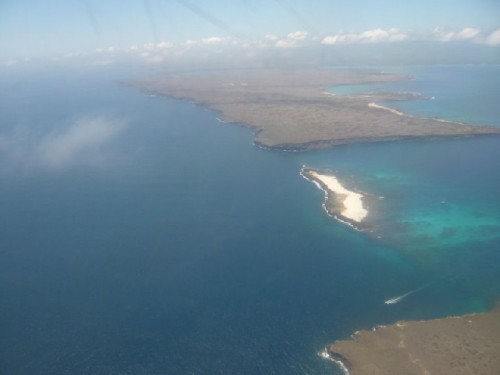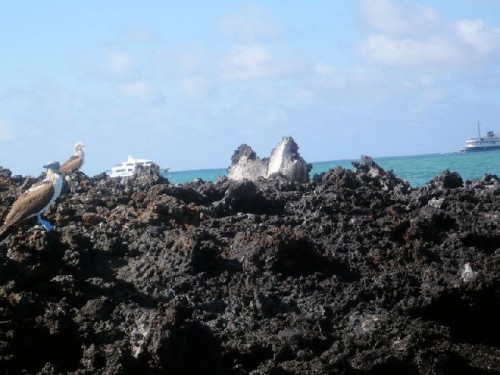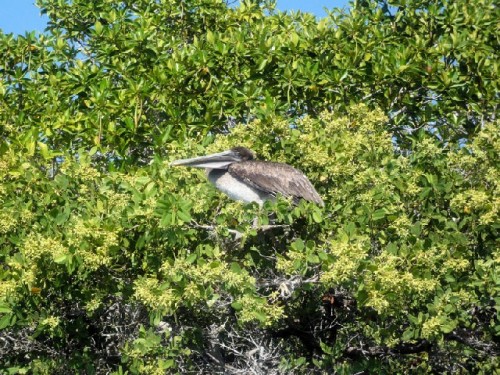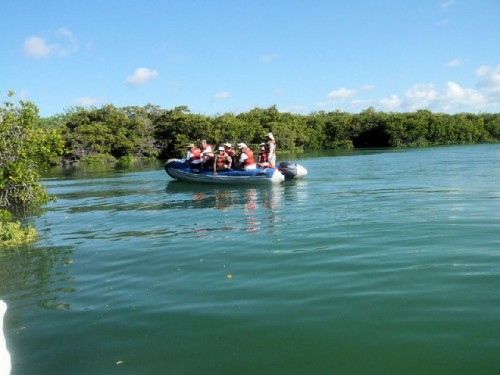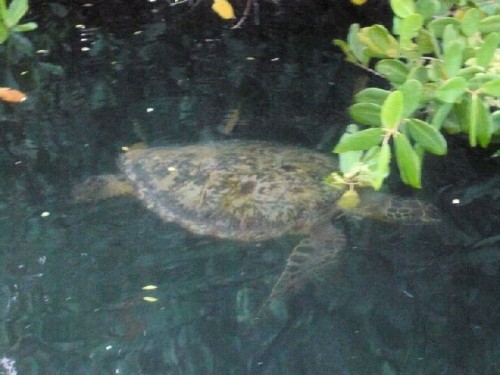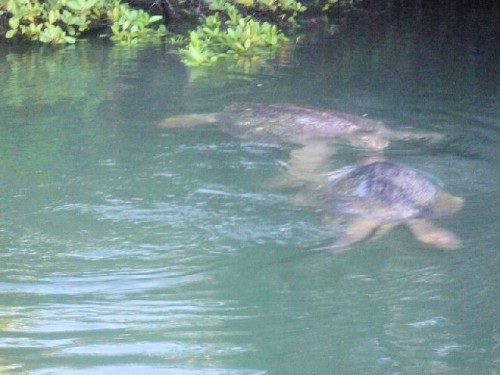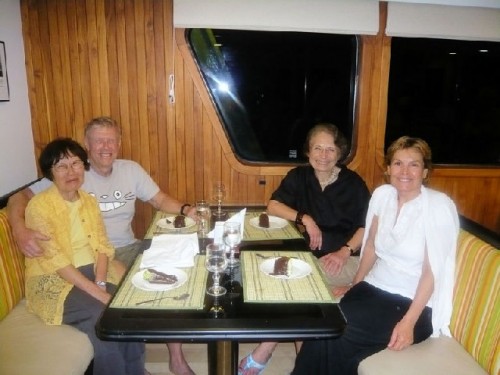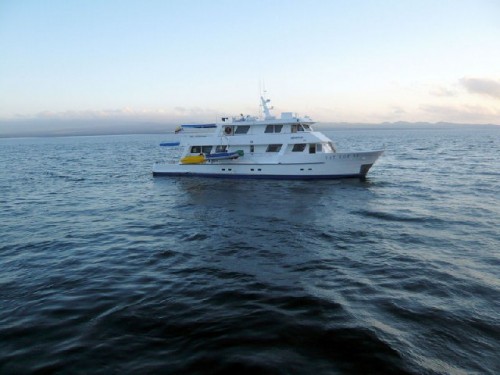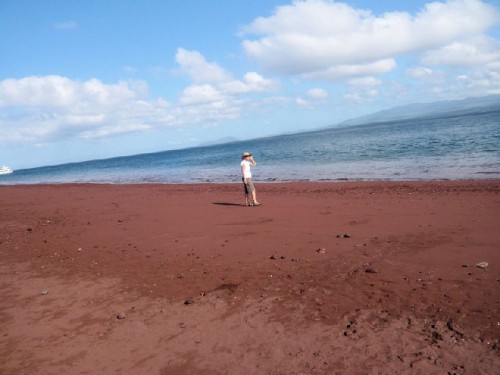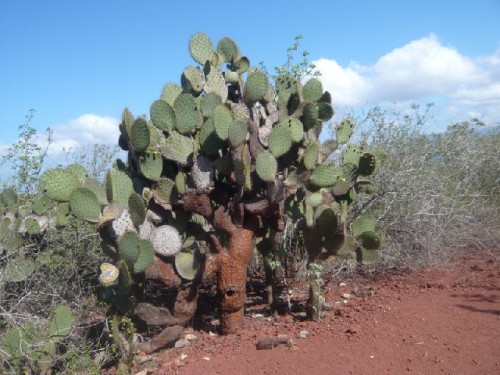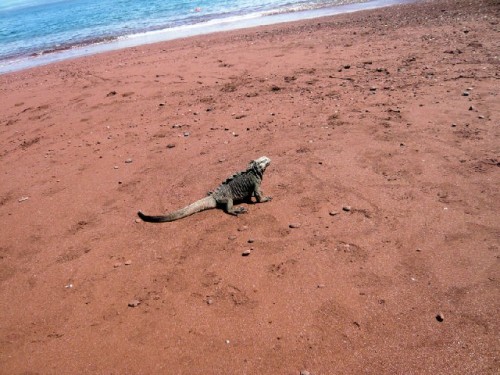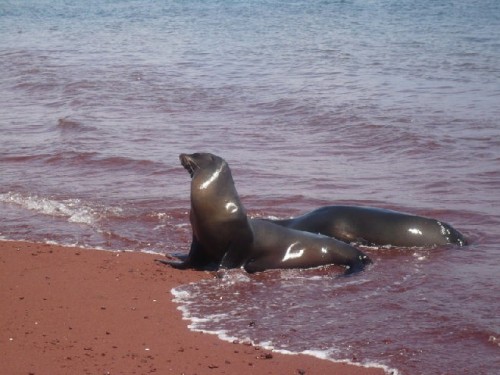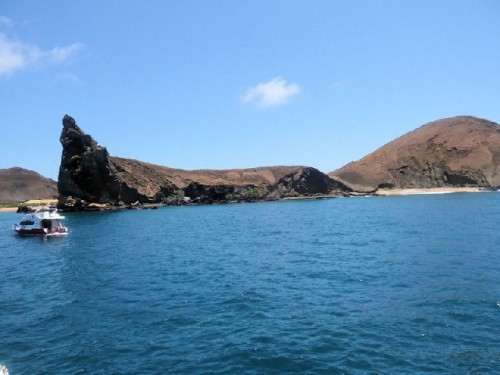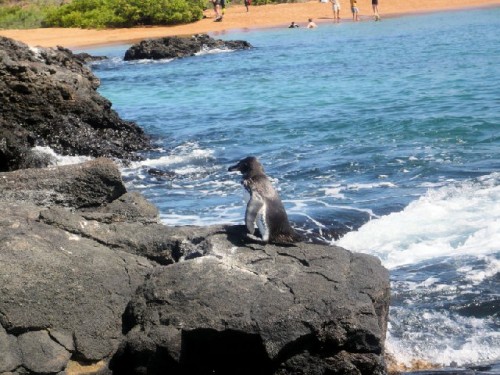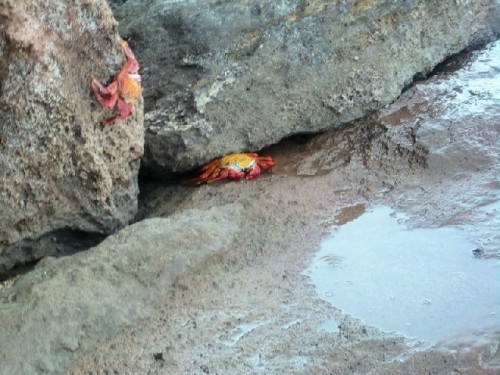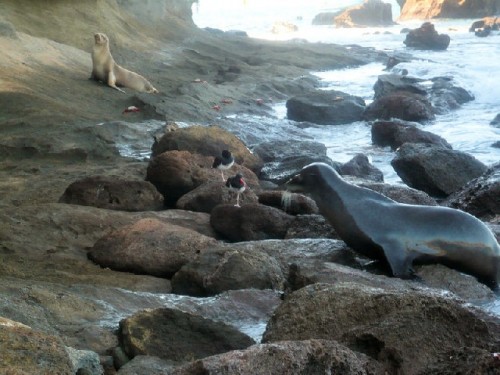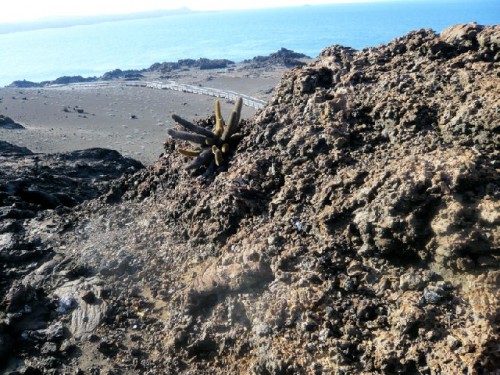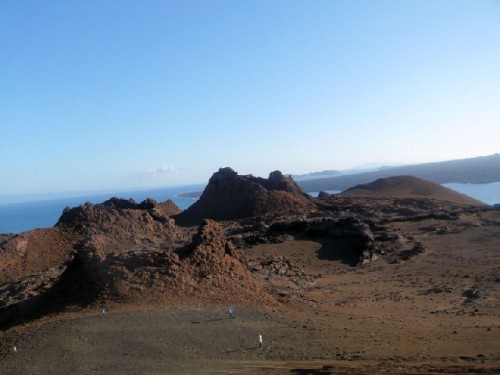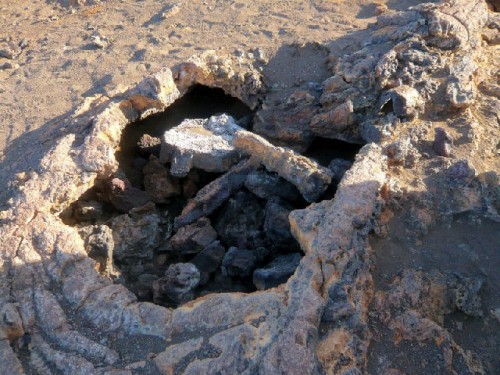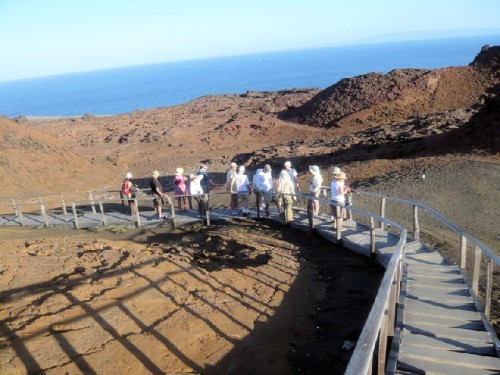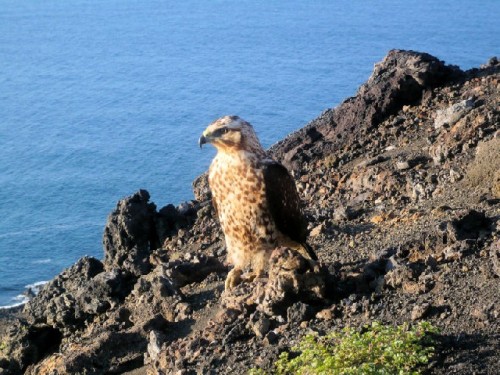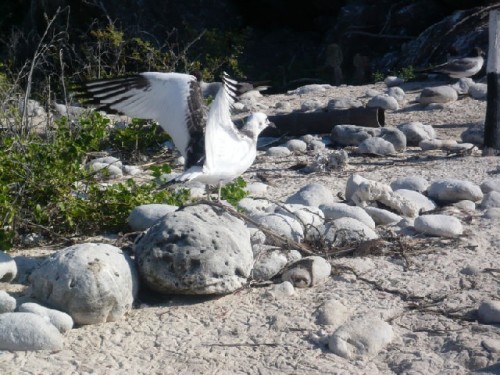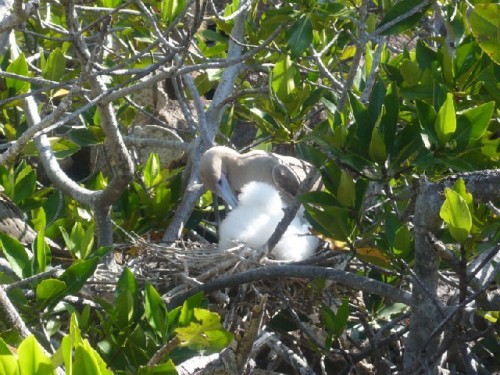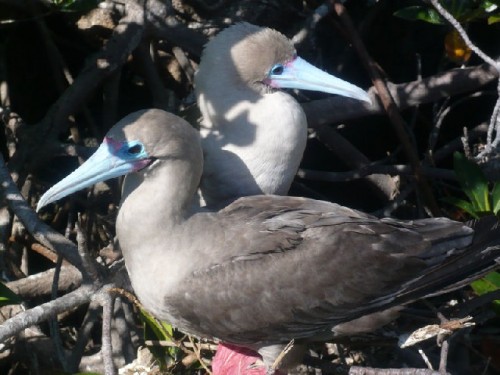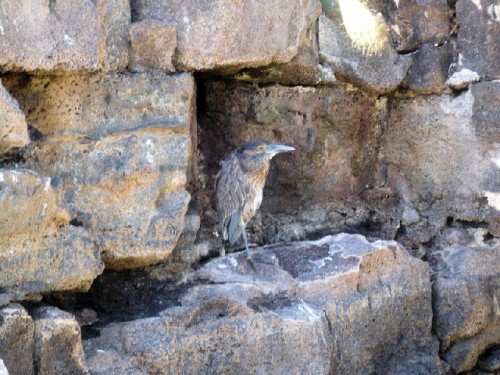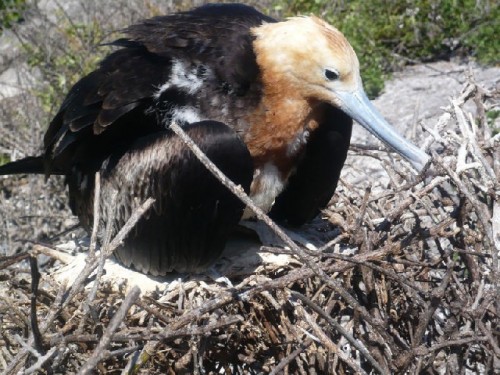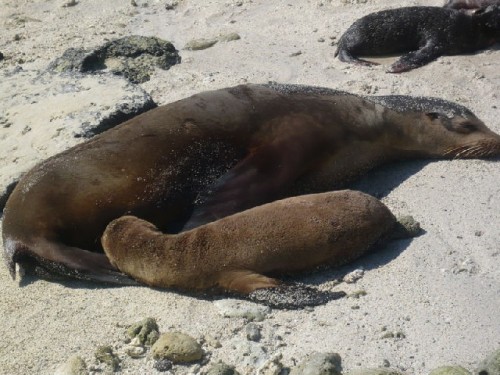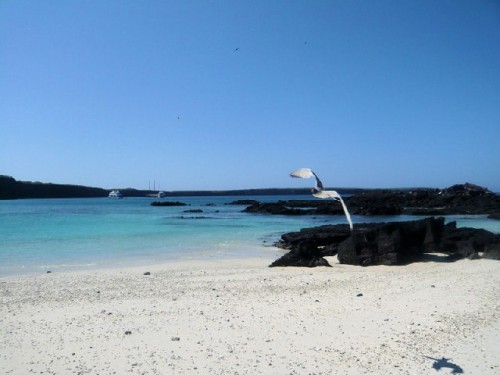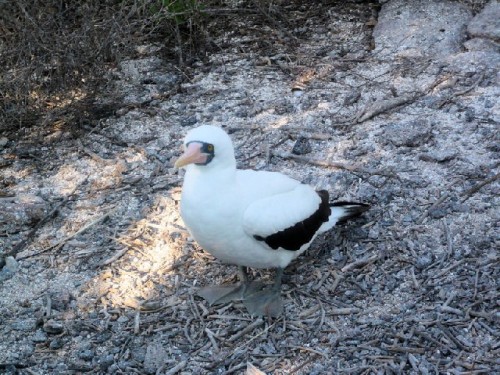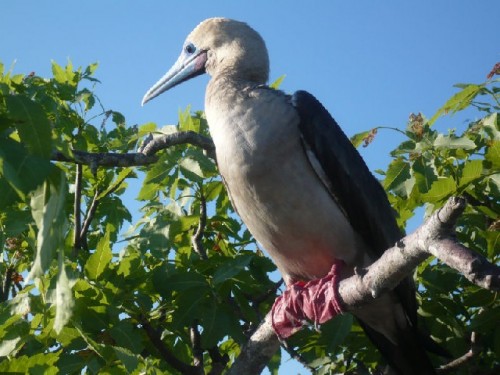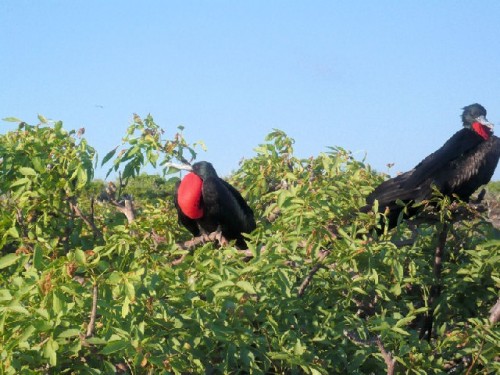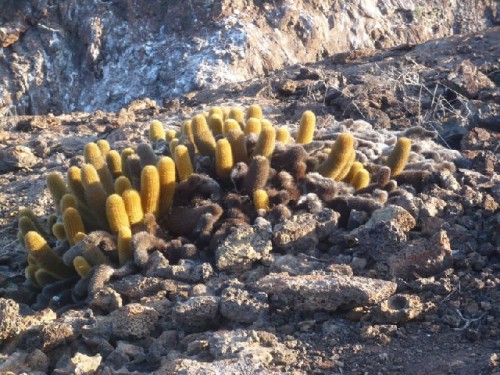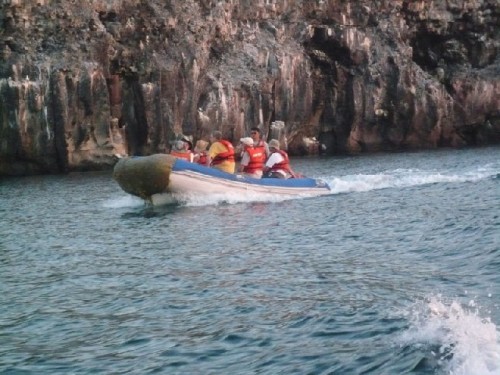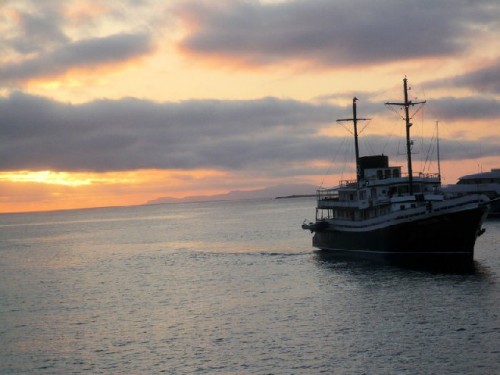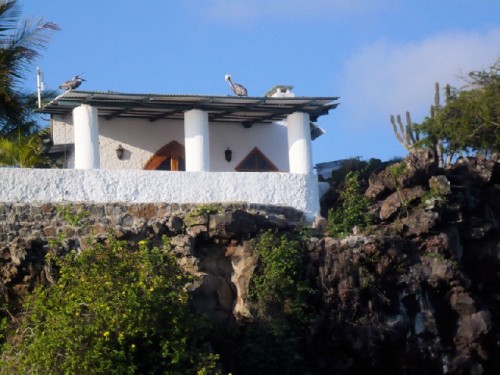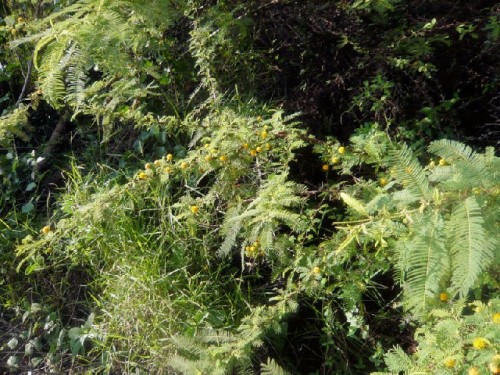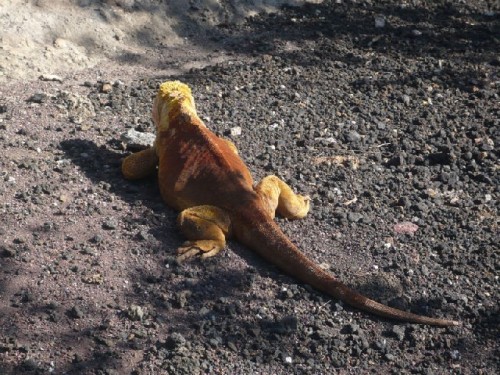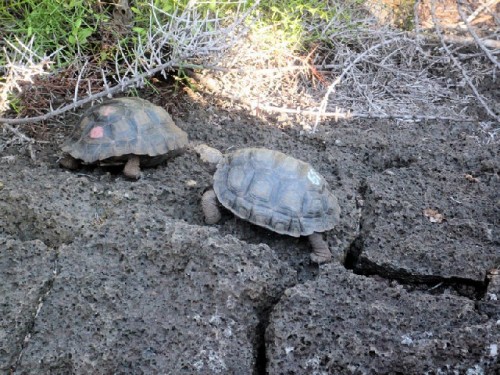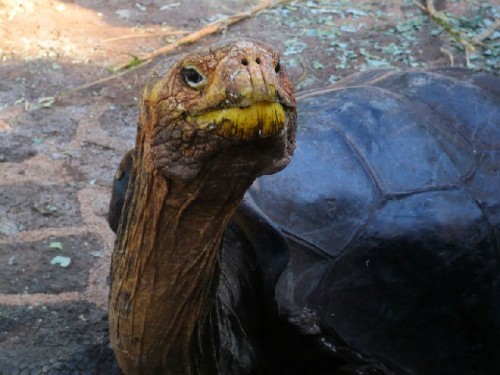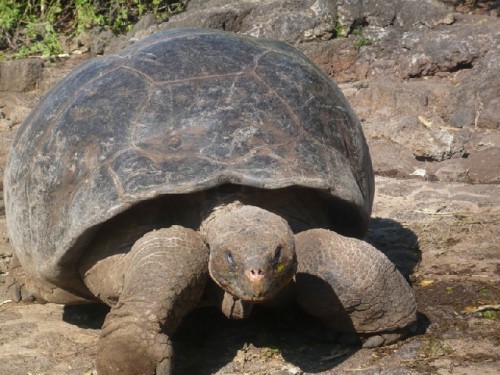Ecuador: Part Three
Galapagos Islands
By: Zeren Earls - Mar 27, 2009
An early morning flight from Quito took us to Baltra Island in the Galapagos archipelago, set in the Pacific Ocean 570 miles west of the Ecuadorian coast. During World War II Baltra was occupied by the US Army, which built the first landing strip for jet aircraft in the Galapagos. Now a UNESCO World Heritage Site, the Galapagos islands are carefully controlled by the government as to the number of visitors allowed each day. We had to obtain a Transit Control Card with an ID number for $10 in addition to the $100 entry tax included in our tour price.
Upon landing we set our watches back one hour and made a short bus transfer to the dock, where we boarded dinghies to get to our cruise boat. It was siesta time for the sea lions stretched out everywhere on the dock, including benches that provided shade. On nearby tuff formations pelicans surveyed fishing boats, while blue-footed boobies displayed their brightly-colored feet. In amazement, we donned our life vests and hopped on the dinghies on our way to Tip Top III, our boat-home for the next three days.
After settling into our comfortable cabins, a lunch of spinach tartlets and fresh fruit and rest time on deck, we headed in dinghies to Turtle Cove, north of Santa Cruz Island. Here we watched giant turtles mate, creating expanding ripples on the water's surface as they moved; meanwhile, baby shark dove for sardines. In anticipation of the next day's adventure, we returned to our ship to meet our captain and his crew, and to hear about our cruising itinerary from Paulina, our certified Galapagos naturalist trip leader. To minimize the impact of visitors on the ecosystems of the islands, the conservation authorities of the Galapagos National Park review itineraries and make changes as needed. Therefore the passengers do not know in advance which of the thirteen major islands they will have the opportunity to visit.
Our first day in the Galapagos coincided with Fulya's birthday, which we celebrated over dinner, topped with a special cake courtesy of the chef. During the night our boat cruised to Rabida, known to have the most volcanic rocks of all the islands. Anchoring off shore, we prepared for a wet landing from the dinghies. In shorts or rolled-up pants, some wearing water shoes, we walked onto a dark red beach, where sea lions and marine iguanas sunned themselves on cliffs and shorelines. We swam and snorkeled and walked on the beach. Crawl swimming with eyes closed, I had an eerie feeling that I might bump into a sea lion, but I managed to bypass them.
Walking around the island, we learned about the six different vegetation zones in the Galapagos, two of which we saw in Rabida. The zones begin with the shoreline and end with the highlands. Shoreline plants such as mangroves, which are a nesting area for brown pelicans, tolerate high levels of salt. Next is the arid zone, characterized by thorny plants, such as different types of cactus. The wide-leaf cacti, with a large storage capacity for water, tend to collapse after a very rainy season due to increased weight. We returned to our boat for lunch before our afternoon exploration of another island.
Another wet landing took us to Bartholomew Island, where we climbed 340 feet on a 278-step stairway built to preserve the island's surface. During the climb we encountered different volcanic formations, such as spatter and tuff cones, lava flows and lava tubes. The ash, lava and minerals in the various eruptions determine the color of the rocky terrain; lava cactus push through hardened lava flows, breaking up their dried patterns. As we ascended, the view resembled a lunar scene; crater mounds overlooking the ocean dotted the landscape. On the return to our boat, the sun set, accentuating in silhouette the island's famous signature, Pinnacle Rock, at the edge of Sullivan Bay, as a baby owl flew by.
The next overnight cruise brought us to Genovese, a half-moon-shaped island north of the Equator at the northeast corner of the archipelago, which comprises 42 islets altogether. Feeling fortunate to have "the bird island" on our itinerary, we landed on a beautiful, sandy beach with clear, turquoise waters, where we swam, following a delightful walk on the trails. Sea birds with no fear of predators were all around at close range. Red-footed boobies, with their contrasting red feet and blue bills, sat on tree branches, their preferential perch, while blue-footed and masked boobies roamed on the ground. Frigate birds bustled about. Lava gulls and herons fed near the shores of a tidal lagoon.
In the afternoon we dry landed on rocky terrain on the other side of the island. We climbed to a plateau on rock steps secured by a wooden rail, passing by trees and shrubs of a higher vegetation zone. It was the mating season in the frigate colony; male birds displayed themselves with inflated red pouches to attract females. Mother birds fed their young by dropping food into their mouths. The Galapagos owl was on its customary daytime prowl to feed on fish. Mockingbirds, Darwin finches, boobies, shorebirds and thousands of petrels flew all over, along the extensive lava fields. I sat on a lava rock looking out to sea, as a symphony of bird sounds filled the air.
On the way back, our dinghy ride along the walls of the crater revealed the variety of animals that find shelter in the ledges and crevices of the lava. We spotted fur seals with babies, a colony of male sea lions fighting one another and red-billed tropic birds flying in and out of their nests above. Over a farewell drink, we thanked our captain and his crew, especially the cook, who produced delicious multi-course dinners out of a tiny kitchen. The farewell dinner consisted of stuffed turkey roulade, shrimp with fruit chutney, green beans, cauliflower and potatoes, accompanied by a salad of shredded carrots and fruit tart for dessert.
In the morning, I woke up as our boat approached the harbor of Santa Cruz, the second largest island of the Galapagos and home to many of its human residents. I rushed to the upper deck to watch the sun rise, as it revealed the shoreline. After breakfast, which included fresh coconut juice, a small boat delivered us to Puerto Ayaro, the commercial center of the island. The highlight here was the visit to the Darwin Research Center, where naturalists come for training and certification. Walking by a variety of plants endemic to the island, we arrived at the turtle-breeding center, where baby turtles hatch. Our viewing experience ranged from two-to-three-week-old turtles to 600 pound tortoises that astonished the first explorers, who named the islands "Galapagos", the Spanish word for "tortoise".
The Darwin Foundation gift shop, which supports research at the center, had quality items for sale. I bought a T-shirt with an image of Darwin's finches, a lightweight travel shirt with adjustable sleeves, and a postcard depicting a happy pair of giant tortoises mating, as evidenced from the expression of the male. Afterwards, we descended by bus to farmlands with papaya and citrus trees, crossing Santa Cruz Island to catch a boat to Baltra, where the airport is located. Local boat transportation to the airport leaves when full. While waiting for other passengers, I had a final opportunity to gaze at wildlife; a white pelican graced the turquoise waters, while myriads of fish, small and large, swam beneath the clear waters.
On the return trip, we gained back the hour we had initially lost; arriving in Quito at 4pm. Roberto met us at the airport with welcoming hugs as if he was meeting long lost relatives. The warmth of our mestizo trip leader was only matched by his passion for the jungle and his national pride. Back at base at our hotel, we repacked for our Andean post-trip. Eight of the sixteen in our group had signed on for this extension. We said goodbye over a farewell drink and dinner to those returning to US. At the bar Roberto treated us to the local favorite drink, fermented sugar cane juice. Dinner was a choice of beef stroganoff or chicken, followed by fresh fruit or chocolate mousse. Ecuador is a major producer of delicious chocolates. We all received chocolate bars as going away presents courtesy of Roberto's wife.
Next adventure: The Andes and the Devil's Nose Train.

